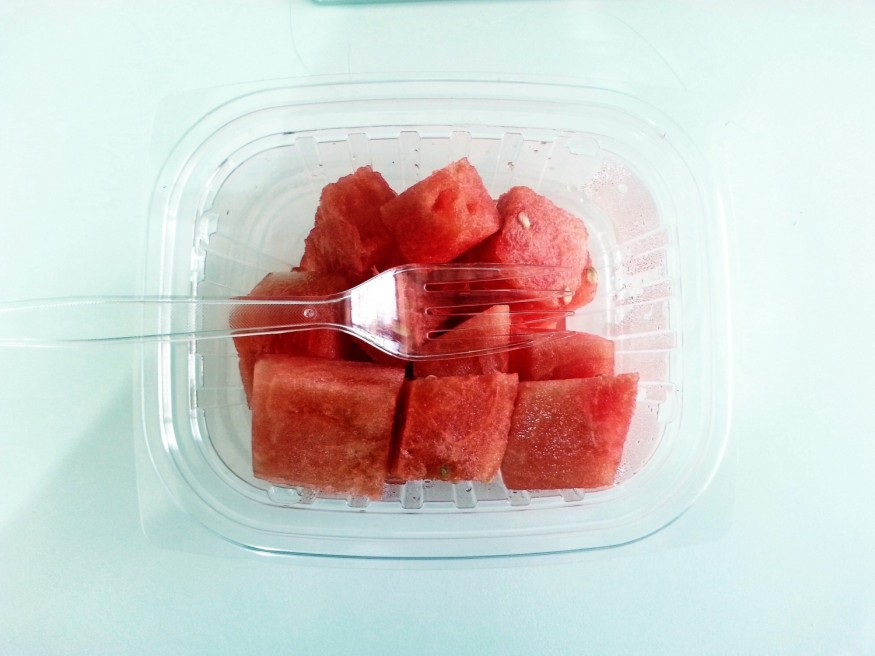
Understanding the types of plastics used in the food industry is an important part of making sure we stay safe and healthy. These materials come into direct contact with our food. Fortunately, there are a mountain of safety regulations in place to ensure that manufacturers only use plastics that are not toxic. But that doesn't stop the rumor-mill from echoing gossip and hearsay.
Let's break through the noise and take a close look at the types of plastic used in the food industry to learn the facts once and for all.
PVC Plastics
PVC plastic is found across the grocery store serving as a home for many of your favorite goodies. From cookies to jelly, we find PVC plastic everywhere. It's the most versatile of all food storage plastics because it can be formulated to be either flexible or rigid. It's highly durable and has a high strength index.
This plastic also serves as an amazing barrier against grease and oils so it's used in every type of product you can imagine - lids, foils, gum packaging, beverages - you name the food and PVC plastic is likely a part of its packaging.
HDPE Plastics
HDPE is a thermoplastic polymer formulated using petroleum and other ingredients. It's considered one of the most versatile plastics in the food industry. HDPE packages ice cream containers, freezer bags, and frozen vegetables so you've likely encountered it. You'll also find it in select water bottles and other beverages that are stored in a cold environment.
HDPE has a high resistance to impact so it's a staple in the storage of so many products that it's impossible to list them all. Due to their popularity, HDPE has been extensively tested and found to be a completely safe storage medium. Just be sure to follow the instructions and avoid storing these products in high temperature areas. Polyethylene is a well-known HDPE plastic that is commonly used for many different types of food storage.
LDPE Plastics
LDPE shares a lot of similarities with HDPE but isn't quite as rigid. So it's useful in plastic products like cling wrap and six pack rings. You will also find it in squeezable bottles like ketchup and bread packaging. LDPE is also easy to recycle.
With that said, its recycled state not safe to come into direct contact with food or beverage products, which is why we see the recycled versions of this plastic used solely on the outside of other food packages.
PC Plastics
One of the biggest concerns with PC plastics is the presence of bisphenol A. As a result, the FDA has submitted this plastic to a grueling number of studies that all agree that there are no apparent health problems found in PC plastics. Furthermore, there are FDA approved sheets available for all different kinds of uses.
In the food industry, you'll find PC plastics in reusable water bottles and sterile baby bottles. This is due to its transparent and robust thermoplastic design. It's tough, durable, and highly resistant to temperature changes.
PP Plastics
PP plastic is developed using a unique combination of propylene monomers, which makes it capable of withstanding high temperatures. Due to its highly flexible nature, PP plastic is perfect for storing foods that require a vacuum seal. Yogurt, sour cream, and cream cheese all come to mind. But PP plastic also houses your favorite potato chips.
Due to its high temperature resistance, this plastic is also used to create microwavable plastic containers.
PS Plastics
PS is another plastic that you'll find in almost all food packages due to its versatility. It's a thermoplastic so it does well against temperature changes. But what makes PS plastic unique is that it can be formulated as a solid or as a foam. That makes it highly useful in disposable food containers. If you've ever drank out of a red plastic cup, then you've used PS plastic.
You will also find PS plastics in foam restaurant to-go plates, meat packaging, and egg cartons just to name a few.
Final Thoughts in the Types of Plastics Used in Food Packaging
We've looked at the most common types of plastics used in food packaging. Everything on this list has been thoroughly tested by the FDA and worldwide reputable sources to confirm that they have no negative health consequences. Just be sure to follow instructions and don't store any of these plastics in extreme high temperature environments.
© 2026 ScienceTimes.com All rights reserved. Do not reproduce without permission. The window to the world of Science Times.











